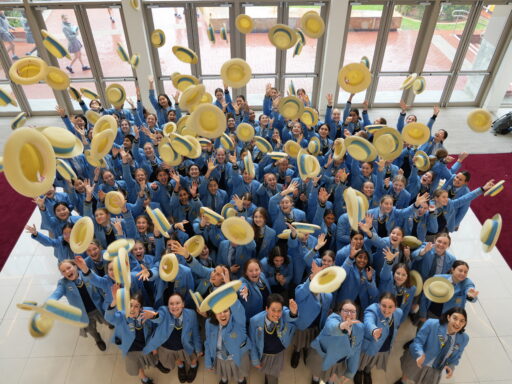At St Hilda’s, we take pride in staying abreast of global research in education to continually shape our practices in support of our students. A recent longitudinal study from Ireland has offered thought-provoking insights into the long-term impact of single-sex education – particularly for girls – and affirmed what we see every day at our school: that girls thrive in an all-girls environment.
Academic perceptions and outcomes
The study explored how girls perceive their learning abilities and aspirations, and how these perceptions are influenced by their school environment. Teachers reported stronger recognition of girls’ talents in extracurricular areas – especially in all-girls schools – and held higher expectations for their academic futures. Across the board, girls expressed a clear intention to pursue tertiary education, with those in single-sex schools demonstrating greater confidence in their abilities and receiving more affirming feedback from their teachers.
Girls at all-girls schools were also more likely to agree that both genders can perform equally well across tasks, and they consistently reported feeling that their teachers saw them as capable and intelligent.
Behavioural advantages
The study highlighted a more positive approach to rules and fairness among students in girls’ schools, particularly at the primary level. These students were not only more receptive to school values, but also felt they had a voice in shaping school culture. Girls described their experiences as inclusive and collaborative spaces where ideas were heard, decisions were shared, and meaningful change was possible.
Wellbeing advantages
The benefits of girls’ schools for primary school children extend to a crucial aspect of the student journey: relationships with their peers and the impact of this on experiences of bullying. With rising rates of anxiety, especially among girls, bullying is a significant focus for educators, principals and families. Concerningly, the number of times girls reported witnessing bullying has increased over time compared to boys. But this was not the case for those in girls’ schools. Girls attending girls’ schools reported the lowest levels of bullying out of all the project participants.
The researchers attribute this to the stronger social connectivity girls have with their peers at girls’ schools, compared to girls in coeducational environments. Girls attending girls’ schools are less likely to single out others as being “popular” or “socially prestigious”, and there were typically smaller and tighter networks of friends, with girls’ schools having the highest levels of closeness among students.
Summary
This research across coeducational and single-sex schools allows us to critically review the benefits of an education from a school like St Hilda’s. Being able to adapt our programs to meet girls’ physical, academic and emotional needs allows our students to better prepare themselves for a successful future.
At St Hilda’s our Junior School all-girls experience continues to deliver results in Senior School. The majority of our 2024 ATAR high achievers were Junior School students and many were voted into leadership positions by their peers.
Read about the study here.









